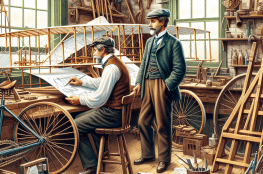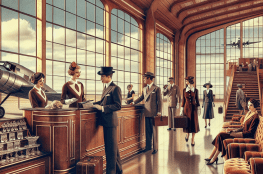The Birth of Space Tourism: From the X-15 to Virgin Galactic
Space exploration has always captivated the imagination of humanity. It’s no wonder that the concept of space tourism, where ordinary people can venture beyond Earth’s bounds, has gained momentum over the years. From the pioneering days of the X-15 rocket plane to the ambitious endeavors of Virgin Galactic, the journey of space tourism is an incredible tale of human ingenuity and exploration.
The X-15: Pushing the Envelope
The X-15 rocket plane, developed in the 1950s and 60s, played a crucial role in advancing aeronautical and astronautical engineering. Although it was primarily a research aircraft, the X-15 set the stage for space tourism by pushing the boundaries of human flight.
With its ability to reach suborbital altitudes and speeds close to Mach 7, the X-15 opened up the possibilities of space tourism, albeit in its early stages. However, due to limited resources and technological constraints, the dream of space tourism remained a vision for the future.
Watch this video for a closer look at the X-15:
The Dawn of Commercial Spaceflight
In the 21st century, with advancements in technology and the emergence of private space companies, space tourism became a tangible reality. Companies like Virgin Galactic took on the challenge of transforming space travel into a commercial venture.
With its SpaceShipTwo spacecraft, Virgin Galactic aimed to offer civilians the opportunity to experience the wonder of space. Powered by a unique hybrid rocket motor, SpaceShipTwo was designed to carry a crew of two pilots and six passengers, offering a suborbital flight experience unlike any other.
Videos like this one showcase the incredible journey of Virgin Galactic’s SpaceShipTwo.
The Future of Space Tourism
As private space companies continue to innovate and refine their spacecraft, the future of space tourism looks exceptionally promising. Companies such as Blue Origin and SpaceX have also joined the race to make space accessible to everyday individuals.
While the tickets for space tourism are currently priced at levels that only a select few can afford, experts predict that as technology advances and economies of scale come into play, these costs will become more affordable, opening up space tourism to a wider audience.
Conclusion
The birth of space tourism has been a remarkable journey, from the experimental flights of the X-15 to the visionary efforts of companies like Virgin Galactic. As we move forward, the dream of space tourism is set to become a reality for more and more people around the world.
- Explore the fascinating history of space travel with the Space.com archives.
- Keep an eye on the latest developments in commercial spaceflight on the NASA and SpaceX websites.
So buckle up and get ready to take a giant leap into the future of space tourism!



